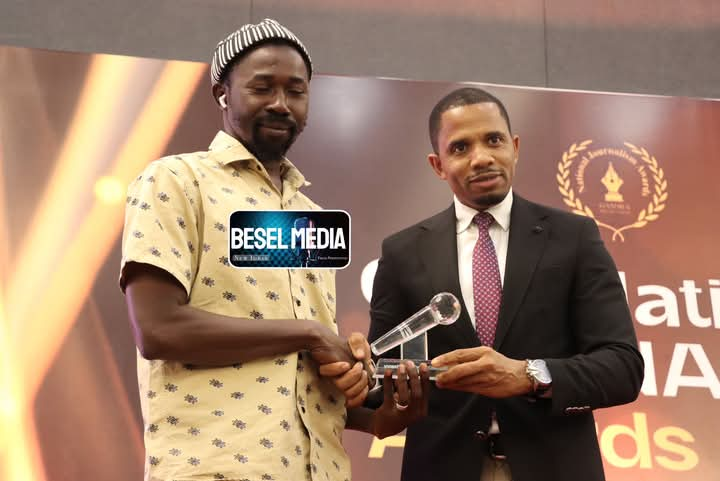By Saul Saidykhan
Yesterday, while dropping my daughter off, I listened to an online Gambian banter regarding the “imminent” return of our country’s self-declared Owner after nearly nine years in exile.
As usual, some of his fans kept alluding to how he developed the Gambia compared to Jawara. For the umpteenth time, it dawned on me that most under 40 Gambian youth still have no clue what our circumstances were when DK Jawara took over from the last British Governor Sir John Paul.
So, here is an inventory of the major assets (public and private) that D.K. Jawara had at his disposal on Independence Day 1965 to create a modern nation – courtesy of Berkeley Rice:
- Total annual revenues of $6.5 million; two small groundnut oil mills (one privately owned;)
- 95% of the country’s total exports were groundnuts;
- Six cabinet members – only one (Michael Baldeh) had a college degree, the rest were High School graduates or less;)
- A two-man Foreign Ministry; a four-man Foreign service;
- A 150-member paramilitary Field Force;
- A dozen or so well-trained administrators (he cues us in on the fact that “well-trained” doesn’t mean they’re well educated – just that they’ve had years of experience working as understudies of British officials);
- A parliament dominated by barely Western literate and completely illiterate MPs (he cites an MP who couldn’t pass the basic Civil Service Admission Test, yet defeated “a well-qualified Bathurst Accountant” in the 1963 elections;)
- An abandoned poultry farm that was converted into a Teachers Training College at Yundum;
- One hotel –the 50 room Atlantic Hotel built in 1958 (a second one, Adonis hotel was being rushed to completion on the eve of Independence;)
- One airstrip “Yundum airport”;
- One seaport that still needed much work;
- One bank;
- Two restaurants;
- Three High Schools;
- One Technical school;
- Less than a dozen Primary Schools countrywide;
- One bookstore;
- One fire engine;
- One hospital;
- One pharmacy;
- One dentist;
- One civil engineer;
- About twenty miles of tarred road outside Bathurst (most streets in the native residential part of Bathurst itself were unpaved – there is a picture of an unpaved Perseverance Street;)
- One river boat – the Lady Wright (Rice calls it “an ancient creaking steamer” 😉
- One radio station that could only broadcast to the old Colony area of the country for only three hours a day;
- A fleet of about twenty taxi cabs in the entire Colony area (all of which the government rented for the duration of the Independence festivities to ferry its august guests;)
- Three minibuses (newly acquired by the government on the eve of Independence.)
There was no town or city hall anywhere, no sporting facilities, no parliament building, no real roads beyond Brikama (Rice notes that the entire North Bank road is shut off during the rainy season.) Not much else. And a population of 320,000 people!
Since nothing happens in Gambia without our “development partners” – a euphemism for what is now an established culture of shamelessly begging others while stealing our commonweal, here is the sum of what outsiders donated to the young Gambian Republic as Rice recorded:
- The British topped with “more than $3 million in annual aid,” paid half the $140,000 cost of the Independence festivities, gave the PM a motor launch costing $224,000, a new chair for the Speaker of the House, and “some furniture for the cabinet room.”
- The U.S. gave $100,000 worth of machines –a heavy duty hauling crane for the port, a heavy tractor for land clearing, and twelve rice-hulling machines.
- West Germany announced that it planned to give “an executive river craft and six scholarships to German universities.”
- Israel offered 25 scholarships.
- India gave Mrs. Jawara a shawl and a handbag.
- Pakistan gave a silver salver.
- Australia gave an oil painting and a desk set.
- Canada gave two projectors and film.
- France gave a Sevres vase
- Nigeria gave $28,000 for Development projects.
- Ghana gave a carved mahogany box.
- Kenya gave a silver tray.
- Zambia gave a lamp stand.
- Senegal gave five tons of assorted raw fish, by simply dumping them on the Bathurst Wharf causing much consternation. That, because most people noted that “the fish were probably caught in Gambian waters.”
Private businesses also donated:
- The Bank of West Africa gave $14,000.
- Elder Dempster Shipping Lines gave $14,000.
- United Africa Company gave $28,000.
- CFAO gave $6,160 to the Agric Department.
- Four French companies collectively gave the RVH a Sterilization unit.
- S. Madi Ltd gave the PM a Chrysler Imperial convertible, and some expensive dinnerware.
- BP gave a compressor for the Technical school.
- Shell Oil gave Gambia High School a set of Reference books.
- Mobil Oil gave 20 wall thermometers and 600 ball point pens.
This was what D.K. Jawara had to work with in 1965! (Ref: Enter Gambia, p52-53.)
The paucity of material resources is obvious, but worse was the lack of the requisite human resources needed to create and develop a modern country. The Gambia had ZERO professionals in MOST White-collar or Blue-collar fields in 1965.
In contrast, what was the situation like in 1994 when the baffling fellow from Kansala took over in terms of public infrastructure and skilled human resources?
So perhaps, we should ALL keep these facts in mind when comparing Jawara to his successor as Context matters! Let’s stop comparing a mango to a baobab.
(The quoted facts are spread over several chapters, but Rice begins rattling out the unflattering stats from his introduction to the book (Introduction XIV.) He supplies more data beginning with the first page of his opening chapter -Bathurst.
Though in pun, as is characteristic of his style in the entire book, he warns his western readers not to rely on his stats because they are “approximations gathered under conditions that would drive any reputable statistician insane.” But from some old hands that I’ve checked with, the data is in fact a pretty accurate reflection of Gambian reality at Independence.





